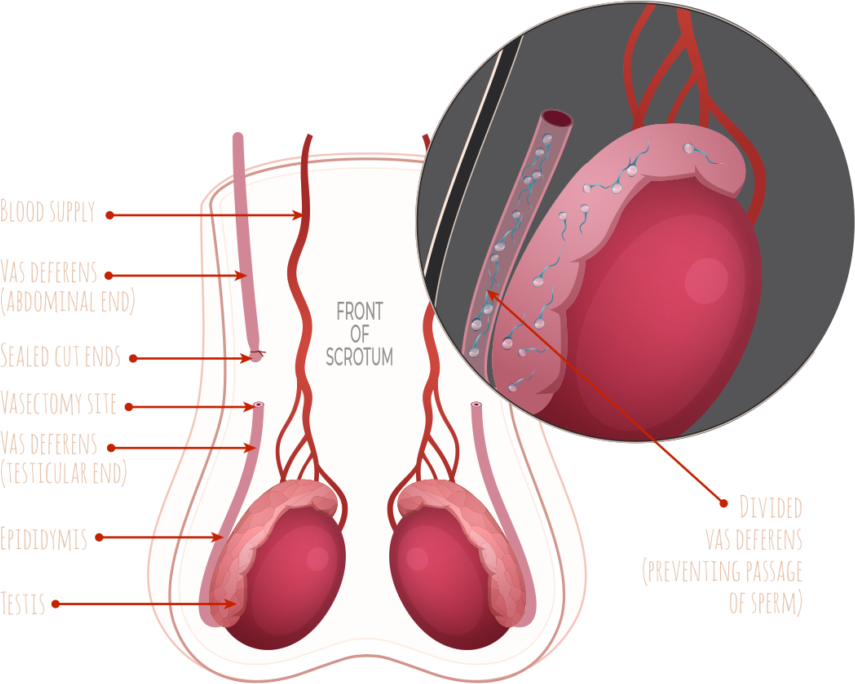
Valparaiso Vasectomy is a permanent form of birth control for men. It involves the surgical cutting and sealing of the vas deferens, which is the tube that carries sperm from the testicles to the urethra. Once the vas deferens is cut, sperm can no longer be released during ejaculation, making a man sterile.
Whta Is Valparaiso Vasectomy:
Valparaiso Vasectomy you're considering getting a Valparaiso Vasectomy, there are a few things you should know beforehand. In this article, we'll discuss the procedure, its benefits and risks, and what to expect during and after the surgery.
The Procedure:
The Valparaiso Vasectomy is typically done in a doctor's office or clinic and usually takes about 30 minutes to complete. The procedure is done under local anesthesia, which means you'll be awake but won't feel any pain in the area being worked on.
During the procedure, the doctor will make a small incision in the scrotum and locate the vas deferens. The vas deferens will then be cut and sealed using a technique called cauterization. This prevents sperm from traveling from the testicles to the urethra during ejaculation.
The incision is then closed using stitches or surgical glue, and you'll be able to go home the same day. You may experience some pain, swelling, and bruising in the scrotal area after the surgery, but this should go away within a few days.
Benefits:
The Valparaiso Vasectomy is a highly effective form of birth control, with a success rate of over 99%. It's also a permanent solution, so you won't have to worry about birth control for the rest of your life.
Additionally, the Valparaiso Vasectomy is a low-risk procedure with few complications. You'll be able to resume your normal activities within a few days, and there's no need to take time off work.
Risks:
As with any surgical procedure, there are risks associated with the Valparaiso Vasectomy. These risks include bleeding, infection, and inflammation in the scrotum. You may also experience chronic pain or discomfort in the scrotal area, although this is rare.
There's also a small chance that the vas deferens may grow back together, which can cause a failure of the procedure. This is more likely to occur within the first few months after the surgery, so it's important to use another form of birth control during this time.
What to Expect:
Before the procedure, your doctor will give you instructions on how to prepare. You may be asked to shave the scrotal area or take a shower before the surgery. You'll also be asked to sign a consent form indicating that you understand the risks and benefits of the procedure.
After the procedure, you'll need to take it easy for a few days. You should avoid heavy lifting and strenuous activity for at least a week. You may also need to wear a supportive device, such as an athletic supporter, to help reduce swelling and discomfort.
You'll need to use another form of birth control until your doctor confirms that the procedure was successful. This typically involves providing a semen sample for analysis several weeks after the surgery.
Conclusion:
If you're looking for a permanent form of birth control, the Valparaiso Vasectomy may be a good option for you. It's a highly effective and low-risk procedure that can give you peace of mind for the rest of your life.
Before getting the Valparaiso Vasectomy, be sure to discuss the procedure with your doctor and understand the risks and benefits. With the right preparation and aftercare, you can have a successful procedure and enjoy the benefits of permanent birth control.
Valparaiso Vasectomy How Its Work?
A Valparaiso Vasectomy is a surgical procedure that involves cutting and sealing the vas deferens, the tubes that carry sperm from the testicles to the urethra. By blocking the flow of sperm, a vasectomy is a highly effective form of permanent birth control for men.
The procedure is usually performed in a doctor's office or clinic, and it typically takes about 30 minutes to complete. Before the procedure, the patient is given a local anesthetic to numb the scrotum and prevent any pain during the procedure.
Once the patient is numb, the doctor will make a small incision in the scrotum and locate the vas deferens. The vas deferens is then cut and sealed using a technique called cauterization, which uses heat to seal the ends of the tubes. This prevents sperm from being released during ejaculation.
After the vas deferens has been cut and sealed, the incision is closed using stitches or surgical glue. The patient can usually go home the same day and will need to rest for a few days to allow the area to heal properly.
It's important to note that a vasectomy does not prevent the release of semen during ejaculation. The procedure only blocks the flow of sperm, so the patient will still be able to have an orgasm and ejaculate normally.
In the weeks following the procedure, the patient will need to use another form of birth control, such as condoms, until a semen analysis confirms that there are no sperm present in their semen. This typically involves providing a semen sample for analysis several weeks after the surgery.

If you want to get amazing benefits by using this link
Conclusion:
Overall, a Valparaiso Vasectomy is a safe and effective form of permanent birth control for men. While there are risks associated with any surgical procedure, complications are rare, and the benefits of a vasectomy can be life-changing for many couples.


